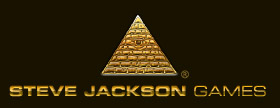
Word & Page CountsLast Updated: August 28, 2017We don't expect freelance writers to be familiar with the demands and peculiarities of our pagination and layout processes, but we do require all outlines to include word and page counts, and we definitely expect manuscripts to come in on length. Years of trial and error have given us a good idea of how many words fill a page, and we ask authors to keep the following guidelines in mind. Still, your project may be an exception to almost anything discussed here . . . always check with your editor! Page FormatThe bulk of our publications are laid out in two columns, with boxes containing asides placed strategically by the production artist. See almost any recent GURPS Fourth Edition book (or this example) for what that looks like on the page. We use a variety of other formats for title pages, tables of contents, indexes, back covers, etc., but such things are the responsibility of editorial and production staff, not writers. Also note that the GURPS Basic Set and GURPS Fantasy use a deprecated three-column format, and that GURPS Third Edition books use an even older format involving sidebars – do not use those products as examples! Thus, all author-created text falls into just two possible categories: Main text consists of two equal-sized columns on one page. Text at the bottom of the left-hand column flows to the top of the right-hand column, and text at the bottom of the right-hand column flows to the top of the left-hand column on the next page. Our A-HEAD and B-HEAD styles (see our Outline Guide) are full-width headings that break across both columns; text does not flow across these. Boxes of text may interrupt one or both columns, and must be self-contained. Most boxes should be 400 words or shorter. No box should exceed 750 words without editorial permission. See the WYSIWYG Template for Microsoft Word to learn what Word styles to use in each case. Words Per PageA standard page in this format contains 850 words. Be aware that this is an average. Over the course of an entire work, it's fairly reliable. However, highly formatted content with lots of whitespace (character sheets, monster stats, tables, templates, vehicle write-ups, etc.) – and anything with maps or diagrams – fills a page with fewer words. Remember this when estimating how many pages you'll need to contain your content, consulting with your editor as necessary. The Introduction should never be more than 800 words all told unless it's so long that it requires two pages. Then the word count to shoot for is 1,650 words: 800 words for the first page, because of the big A-HEAD, and 850 words for the second page. Similar logic goes for short chapters (especially in catalogs of creatures or vehicles where each entry must fit on exactly one page or a two-page spread) – assume 800 words for the first page and 850 words/page after that. Ideally, all chapters should try to hit this mark, but the longer the chapter, the more room there is to fudge, usually by adding art and quotes. All of this assumes standard 8.5"×11" pages, but we do occasionally publish books that use other sizes. The Dungeon Fantasy Roleplaying Game is a good example of this. If you're working on such a project, your editor will provide you with appropriate words/page figures. Overall Page CountTaking into account four pages of end matter (title page, table of contents, index, and ad) and a typical mix of text and boxes, works that meet our standard PDF page counts should contain the following numbers of words:
In principle, PDFs let us be flexible with page counts. In practice, we aim for price points associated with the page counts above. If you believe your project will require a page count that greatly differs from these, discuss this with your editor before you begin! Missing the TargetWorking from averages means few projects are perfectly on target after layout. It's just about always better to come in a little short than a little long – we'll just ask you to help us fill any blank spaces. When in doubt aim low . . . if you deliver too many words, the editor will have to make cuts, and something you were proud of might end up on the cutting-room floor! | ||||||||||||||
|
|
|
